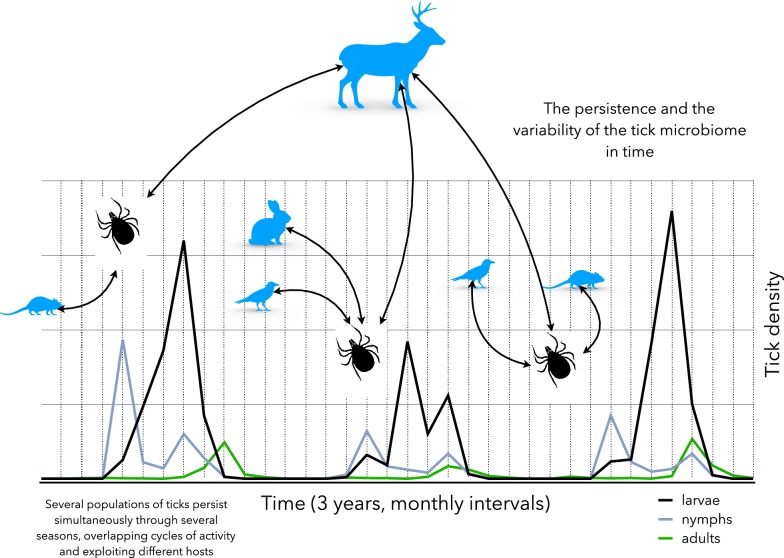Fig. 2.
The time scale may affect the composition of tick microbiome. The illustration schematically represents the seasonal and inter-year variations of a hypothetical population of ticks. The different stages of a tick species have different inter-year densities and a variable seasonality in the same territory that is mainly caused by climate factors. The three stages of the tick may coexist at the same time and at the same habitat patch, and their dynamics (as lines in the figure) may differ from year to year. According to the moment of the year and the host availability, ticks can exploit different species of hosts, resulting in an “exchange” of bacteria obtained from blood meal that may be incorporated into the gut microbiome of the ticks. While immature stages may feed on small vertebrates, large ungulates can also support large numbers of immatures and adults. This adds variability to the microbiome because the seasonality is different each year. Climate shapes these patterns and host availability is different at different moments of the year. The X-axis represents three years and the Y-axis indicates tick density (hypothetical values). Silhouettes of vertebrates and ticks are merely illustrative and do not represent a specific vertebrate or tick stage

